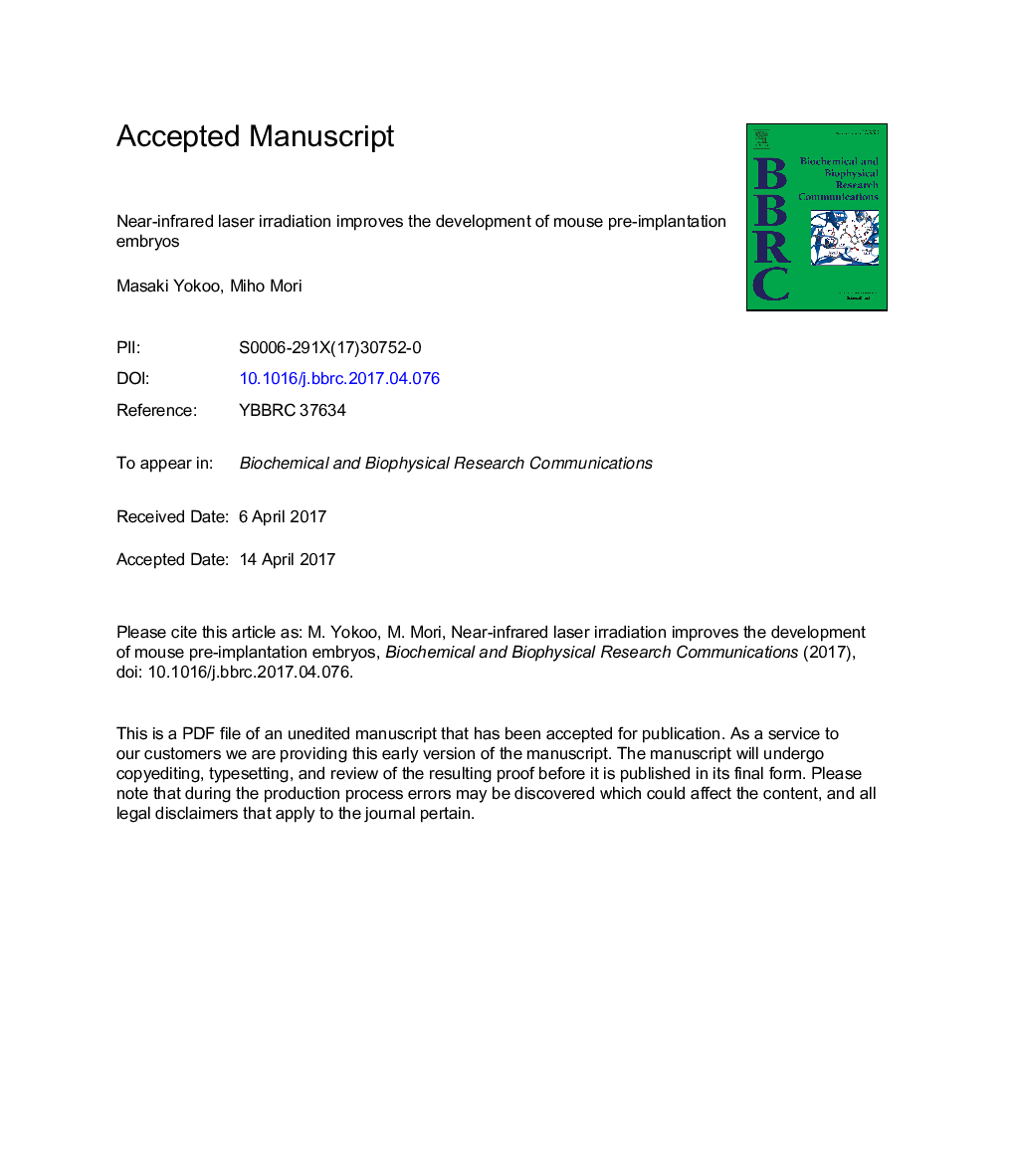| کد مقاله | کد نشریه | سال انتشار | مقاله انگلیسی | نسخه تمام متن |
|---|---|---|---|---|
| 5506061 | 1400284 | 2017 | 23 صفحه PDF | دانلود رایگان |
عنوان انگلیسی مقاله ISI
Near-infrared laser irradiation improves the development of mouse pre-implantation embryos
دانلود مقاله + سفارش ترجمه
دانلود مقاله ISI انگلیسی
رایگان برای ایرانیان
کلمات کلیدی
موضوعات مرتبط
علوم زیستی و بیوفناوری
بیوشیمی، ژنتیک و زیست شناسی مولکولی
زیست شیمی
پیش نمایش صفحه اول مقاله

چکیده انگلیسی
The aim of the present study was to assess the effects of near-infrared laser irradiation on the in vitro development of mouse embryos. Female ICR mice were superovulated with pregnant mare serum gonadotropin and human chorionic gonadotropin (hCG), and mated with male mice. Two-cell stage embryos were collected 40 h after administering hCG and cultured in M16 medium. Two-cell embryos (0 h after culture), 8-cell embryos (approx. 30 h after culture), morula (approx. 48 h after culture), and blastocysts (approx. 73 h after culture) were irradiated at 904 nm for 60 s. These embryos were cultured in a time-lapse monitoring system and the timing of blastocyst hatching was evaluated. Some of the irradiated blastocysts were transferred to the uterine horns of pseudopregnant recipients immediately after irradiation. Pregnancy rates, and offspring growth and fertility, were evaluated. Near-infrared laser irradiation increased the speed of in vitro mouse embryo development. In irradiated blastocysts, hatching was faster than in control (non-irradiated) blastocysts (18.4 vs. 28.2 h, P < 0.05). When 195 irradiated blastocysts were transferred to 18 pseudopregnant mice, all became pregnant and 92 (47.2%) normal-looking pups were born alive. When 182 control blastocysts were transferred to 17 pseudopregnant mice, 14 (82.4%) became pregnant and 54 (29.7%) normal-looking pups were born alive. The growth trajectories (up to 5 weeks) of offspring from irradiated blastocysts were similar to those from control blastocysts. Second generation offspring from transplanted animals were all fertile. These results indicate that near-infrared laser irradiation improves the quality of mouse embryo development in vitro, and increases the live birth rate without affecting the normality of the offspring. Thus, the near-infrared laser method may enhance the quality of embryos and contribute to improvements in reproductive technologies in mammals.
ناشر
Database: Elsevier - ScienceDirect (ساینس دایرکت)
Journal: Biochemical and Biophysical Research Communications - Volume 487, Issue 2, 27 May 2017, Pages 415-418
Journal: Biochemical and Biophysical Research Communications - Volume 487, Issue 2, 27 May 2017, Pages 415-418
نویسندگان
Masaki Yokoo, Miho Mori,